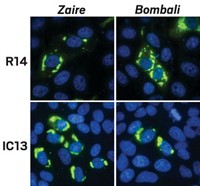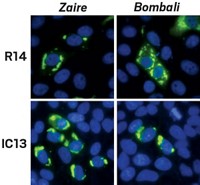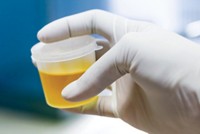Advertisement
Grab your lab coat. Let's get started
Welcome!
Welcome!
Create an account below to get 6 C&EN articles per month, receive newsletters and more - all free.
It seems this is your first time logging in online. Please enter the following information to continue.
As an ACS member you automatically get access to this site. All we need is few more details to create your reading experience.
Not you? Sign in with a different account.
Not you? Sign in with a different account.
ERROR 1
ERROR 1
ERROR 2
ERROR 2
ERROR 2
ERROR 2
ERROR 2
Password and Confirm password must match.
If you have an ACS member number, please enter it here so we can link this account to your membership. (optional)
ERROR 2
ACS values your privacy. By submitting your information, you are gaining access to C&EN and subscribing to our weekly newsletter. We use the information you provide to make your reading experience better, and we will never sell your data to third party members.
Synthesis
Fighting Food-borne Illness
Glycoconjugates that differentiate disease-causing toxins could be basis of simple assay
by Stu Borman
January 16, 2008

The bacterium Escherichia coli O157:H7 is notorious for causing food-borne illness. When it infects people, one would like to know as soon as possible which of two possible Shiga toxins the infectious microorganism is producing, as one is much more dangerous than the other. A set of newly identified glycoconjugates may lead to a practical, inexpensive diagnostic for these toxins, which are named for the Japanese researcher who discovered the bacterial cause of dysentery.
Epidemiologic studies have shown that if E. coli O157:H7 introduces Shiga toxin 2 (Stx2) into a person's gastrointestinal tract, that person has a significant risk of developing hemolytic uremic syndrome???a cause of brain damage, renal failure, and death. Stx1 is only weakly associated with the syndrome, so patients with Stx2 need to be monitored and treated more vigilantly than those with Stx1.
Stx1 and Stx2 can be distinguished with monoclonal antibodies, but antibodies are expensive and require cold storage, which is not always feasible in developing countries, where most E. coli O157:H7 infections occur. Now, Alison A. Weiss, Suri S. Iyer, and coworkers at the University of Cincinnati have identified two glycoconjugates that can differentiate between the two Shiga toxins at potentially less expense and without any need for reagent refrigeration (Angew. Chem. Int. Ed., DOI: 10.1002/anie.200703680).
Each glycoconjugate consists of a carbohydrate recognition element that binds selectively to Stx1 or Stx2, a flexible spacer, and a biotin group. Streptavidin binding to the biotin group can be used to immobilize the glycoconjugate on a solid surface or bead for biosensor use. In the study, the glycoconjugates captured Stx1 or Stx2 in a highly selective manner from human stool samples.
Weiss, Iyer, and coworkers now hope to study the factors that govern the glycoconjugates' selectivity. They also aim to develop a simple assay kit for Stx1 and Stx2. Such a kit "would prove extremely useful in outbreak situations, because it would enable doctors to tell which patients can go home and which need to be admitted" to a medical facility for further treatment, Iyer says.
The glycoconjugate strategy might also be applicable to other toxins and pathogens, he notes. "For example, glycoconjugates might be tailored synthetically to capture specific variants of influenza virus, including the highly pathogenic avian flu," he says.
Although more study is needed to characterize the fundamental basis for the interactions, the approach "could potentially be developed into a rapid and accurate point-of-care diagnostic tool that would help physicians decide whether they need to worry about hemolytic uremic syndrome or not," comments physical organic chemist Eric J. Toone of Duke University.





Join the conversation
Contact the reporter
Submit a Letter to the Editor for publication
Engage with us on Twitter